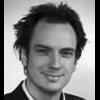split from: "Global Integrative Multilevel Multisystem Aging Cure Plan"
--------------
All:
I wasn't providing any defense: I was explaining, for 'old' reasons that are as true now as they were nine years ago, the fundamental flaws in the "gerontological" heuristic.Come on Michael, give it a rest ... you're providing the same old tired defense.[Reasons why the old-school, "gerontological" approach to intervention in biological aging is a very literal dead end.]
(a) SENS is not an hypothesis, it's an engineering project. (b) It is never the case that just any hypothesis is as good as any other.One hypothesis is as good as another.
"No practical scientific progress"?? Egad, we need to do a better job of communicating ...aside from advocacy and fund raising SENS has made no practical scientific progress since it was conceived.
Let's start by remembering that the Methuselah Foundation didn't even exist until 2004, and having started with the MPrize (which by definition requires a large pool of raised funds before it becomes an effective incentive to spur research), the the generosity of our many donors' support (for which we should all be pathetically grateful -- I don't know if you intended it, but your tone came off as dismissive) gave the Foundation a sufficiently large and reliable funding base to start investing badly-needed funds directly into bottlenecks in key SENS biotechnologies just two years later, leveraging our relationships with leading scientists and their academic labs, and the passion and volunteer spirit of many graduate students now going into SENS research to get big results from precious, scarce funding.
Results in those mere two years:
LysoSENS
We are funding research in 3 labs (at Arizona State, Rice University, and Columbia), working on identification, characterization, and eventual animal and clinical testing of enzymes to degrade specific aggregates whose accumulation is central to atherosclerosis and age-related macular degeneration. Results to date: John Schloendorn, Kent Kemmish, and Jacques Mathieu (and their graduate advisors) have found (but not in all cases precisely identified -- ie, in a couple of cases, they've got the enzyme but can only say what it does, not what exactly it is or what its encoding gene is) microbial hydrolases that can degrade A2E (the stuff that accumulates in retinal pigmented epithelial cells, causes Stargardt’s disease, an inherited form of macular degeneration, and is believed to be the cause of most forms of the age-related variety) and 7-ketocholesterol ( arguably the most important such recalcitrant material in foam cells in atherosclerosis). Some, but not all, of this has been reported in the literature (1,2) ; more has been presented at scientific conferences, including the recent "Understanding Aging: Biomedical and Bioengineering Approaches", hosted at UCLA by (wait for it) the Methuselah Foundation:
Cleaning Out the Junk with Medical Bioremediation
B.E. Rittmann, K. Kemmish, J. Schloendorn, L. Jiang
Center for Environmental Biotechnology, Biodesign Institute, Arizona State University, Tempe, AZ
... As a first step towards testing medical bioremediation, we isolated a range of bacterial species capable of degrading the pro-atherosclerotic model compound 7-ketocholesterol (7KC) and other pathogenic cholesterol derivatives found to accumulate in human atherosclerotic tissue. The fastest-degrading isolates were strains of Nocardia, and we identified key degradation intermediates for one Nocardia strain and proposed a 7KC-degradation pathway that is different from its cholesterol-degradation pathway. This raises the possibility that oxysterol-specific catabolic enzymes may be used for the selective elimination of pathogenic oxysterols from our arteries.
A2E, which accumulates in age-related macular degeneration, is a retinoid compound with strong a visual absorption spectrum. We failed to culture microbes on A2E for over two years. This led us to test the idea that some organisms may have enzymes to degrade A2E without necessarily being able to grow on it as the only carbon and energy source. Thus, we changed our strategy to testing microbial enzymes directly, without requiring growth on A2E as the only carbon and energy source. With our new strategy, we identified two enzymes able to degrade A2E: a peroxidase from horseradish and a cyanobacterial carotenoid cleavage dioxygenase.
Most recently, in as-yet-unpublished work, Dr. Janet Sparrow of Columbia University’s Department of Ophthalmology, who is one of the most distinguished scientists working in this very area, has repeated and confirmed the ASU group’s results on A2E, and is now being funded by the Foundation to lend her expertise to the further characterization and development of the candidate enzymes. After identifying the products of A2E degradation by the enzymes, her lab will perform preliminary safety and efficacy screens by delivering them into A2E-loaded retinal pigment epithelial cells; if the cell culture results are promising, the Foundation will fund the testing of any viable-looking enzymes in vivo, in a mouse model of Stargardt’s.
MitoSENS
After investing MF funds to revive a dorman research program into allotopic expression in Ian Holt's lab at Cambridge,(3) we developed the earlier work extensively enough work to convince ourselves that the initial strategy they had used was going to be extremely challenging (you can hear about some of the progress and problems encountered on the video presentation from the third SENS scientific conference). Happily, at about the same time, Aubrey became aware of early, promising-looking work on a new allotopic expression technique, targeting the allotopically-expressed mRNA to the mitochondrial outer membrane -- work that was also featured, along with several other approaches, at SENS3,(5) by which point it had made even further progress. The results were sufficiently robust that the Foundation redirected its funding to Dr. Corral-Debrinski's newly-opened lab at the Fondation Voir et Entendre in Paris, where (as attendees of "Understanding Aging" were again the first to hear) she has made a huge leap forward with Foundation support:
Optimized Allotopic Expression of the Human Mitochondrial ND4 Prevents Blindness in a Rat Model of Mitochondrial Dysfunction
Mitochondrial diseases due to mutations in mitochondrial DNA can no longer be ignored in most medical areas. With prevalence certainly higher than one in 6000, they probably represent the most common form of metabolic disorders. Despite progress in identification of their molecular mechanisms, little has been done with regard to therapy. We have recently optimized the allotopic expression for the mitochondrial genes ATP6, ND1, and ND4 and obtained a complete and long-lasting rescue of mitochondrial dysfunction in the human fibroblasts in which these genes were mutated. ... To create an animal model of Leber Hereditary Optic Neuropathy (LHON), we introduced the human ND4 gene harboring the G11778A mutation, responsible of 60% of LHON cases, to rat eyes by in vivo electroporation. The treatment induced the degeneration of retinal ganglion cells (RGCs), which were 40% less abundant in treated eyes than in control eyes. ... Importantly, RGC loss was clearly associated with a decline in visual performance. A subsequent electroporation with wild-type ND4 prevented both RGC loss and the impairment of visual function. Hence, these data provide the proof-of-principle that optimized allotopic expression can be an effective treatment for LHON, and they open the way to clinical studies on other devastating mitochondrial disorders.(6)
You can now watch Dr. Corral-Debrinski's original "Understanding Aging" presentation online.
Of course, there's also work that is still ongoing, because it just takes more than a year or 2 to complete, and still other work that, while the protocols have been established and the researchers brought on board, is unfortunately currently delayed, because the global economic downturn has hit Foundation supporters large and small and forced a downward revision of the Foundation's research budget projections. Notable projects discussed in a recent SENS progress report include:
- a project to test the widely-held (but very probably mistaken (7)) belief that low-level, non-cancerous, non-apoptosis and -senescence-inducing age-related (epi)mutations affect enough cells to meaningfully impair tissue function; a definitive resolution to this question will be central to knowing whether WILT will provide sufficient obviation of nuclear (epi)mutations that, in combination with other SENS biotech, it will allow us to achieve "escape velocity." This work is under way the lab of Dr. Jan Vijg, Chair of the Department of Genetics at Albert Einstein College of Medicine, arguably the lead researcher into age-related nuclear mutations and a proponent of the "general cellular malaise" hypothesis.
-a project to ablate anergic T-cells from aging mice, in expectation of substantially reversing immune senescence, in the lab of Dr. Janko Nikolich-Zugich, head of the Department of Immunobiology and co-director of the Arizona Center on Aging at ASU;
-a project to replace the bone marrow of normal mice with telomerase-deficient stem cells, as a key proof-of-concept of WILT and a test for possibly deal-breaking non-telomere-maintenance functions of the telomerase enzyme, in the lab of Dr. K. Lenhard Rudolph at Medical School Hannover in
Germany, whose extensive experience with telomerase-deficient mice and existing research into possible alternative functions of telomerase make him the best choice for principal investigator (as well as having a strong existing interest in this very question).
And, there's the Foundation's hosting of several highly successful, intellectually thrilling interdisciplinary scientific conferences on the key biotechnologies of SENS, which have helped get researchers working quietly locked in their silos to see the broader picture in which their work is embedded and raised the profile of biomedical gerontology both within the scientific community and without; we've raised awareness and excitement about the real potential to achieve the indefinite control of biological aging through the MPrize and Dr. de Grey's tireless efforts to promote serious biomedical gerontology in scientific, public policy, and public arenas; we've helped to nurture a new generation of prolongevist "Young Turks" within the biogerontology establishment, helping life sciences students with a dream of contributing to the cure of the Grey Plague to get a foothold in SENS science by guiding them into relevant postgraduate work (including in many cases positions within Foundation-supported labs) and by providing tools for independent projects for undergraduate students through the MF Undergraduate Research Initiative ...
Dude, what do you want?
-Michael
References
1. Microbial degradation of 7-ketocholesterol.
Mathieu J, Schloendorn J, Rittmann BE, Alvarez PJ.
Biodegradation. 2008 Nov;19(6):807-13. Epub 2008 Mar 15.
PMID: 18344006 [PubMed - in process]
2. Engineering away lysosomal junk: medical bioremediation.
Rittmann BE, Schloendorn J.
Rejuvenation Res. 2007 Sep;10(3):359-65. Review.
PMID: 17708688 [PubMed - indexed for MEDLINE]
3. Expression of algal nuclear ATP synthase subunit 6 in human cells results in protein targeting to mitochondria but no assembly into ATP synthase.
Bokori-Brown M, Holt IJ.
Rejuvenation Res. 2006 Winter;9(4):455-69.
PMID: 17105386 [PubMed - indexed for MEDLINE]
4. Holt IJ, Bokori-Brown M, Hamalainen M.
Allotopic expression: mitochondrial to nuclear gene transfer.
Rejuvenation Res. 2007 Sep;10(Suppl1):S32(Abs53).
5. Ellouze S, Bonnet C, Augustin S, Kaltimbacher V, Forster V, Simonutti M, Sahel JA, Corral-Debrinski M.
Allotopic mRNA localization to the mitochondrial surface: a tool for rescuing respiration deficiencies.
Rejuvenation Res. 2007 Sep;10(Suppl1):S24(Abs 23).
6. Ellouze S, Augustin S, Bouaita A, Bonnet C, Simonutti M, Forster V, Picaud S, Sahel JA, Corral-Debrinski M.
Optimized allotopic expression of the human mitochondrial ND4 prevents blindness in a rat model of mitochondrial dysfunction.
Am J Hum Genet. 2008 Sep;83(3):373-87. Epub 2008 Sep 4.
PMID: 18771762 [PubMed - indexed for MEDLINE]
7. de Grey AD.
Protagonistic pleiotropy: Why cancer may be the only pathogenic effect of accumulating nuclear mutations and epimutations in aging.
Mech Ageing Dev. 2007 Jul-Aug;128(7-8):456-9. Epub 2007 May 21. Review.
PMID: 17588643 [PubMed - indexed for MEDLINE]
Edited by Michael, 15 April 2009 - 11:37 AM.













































